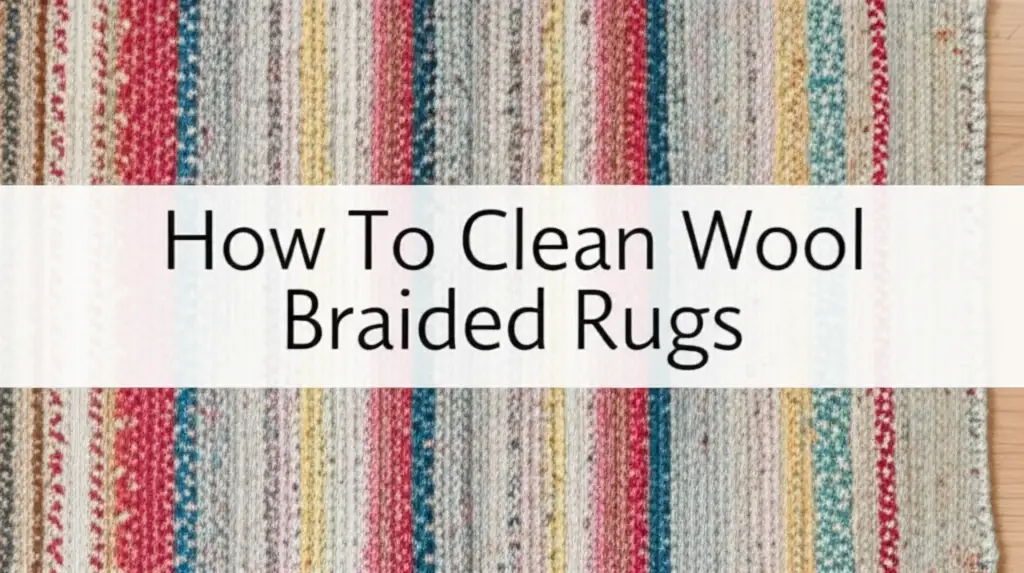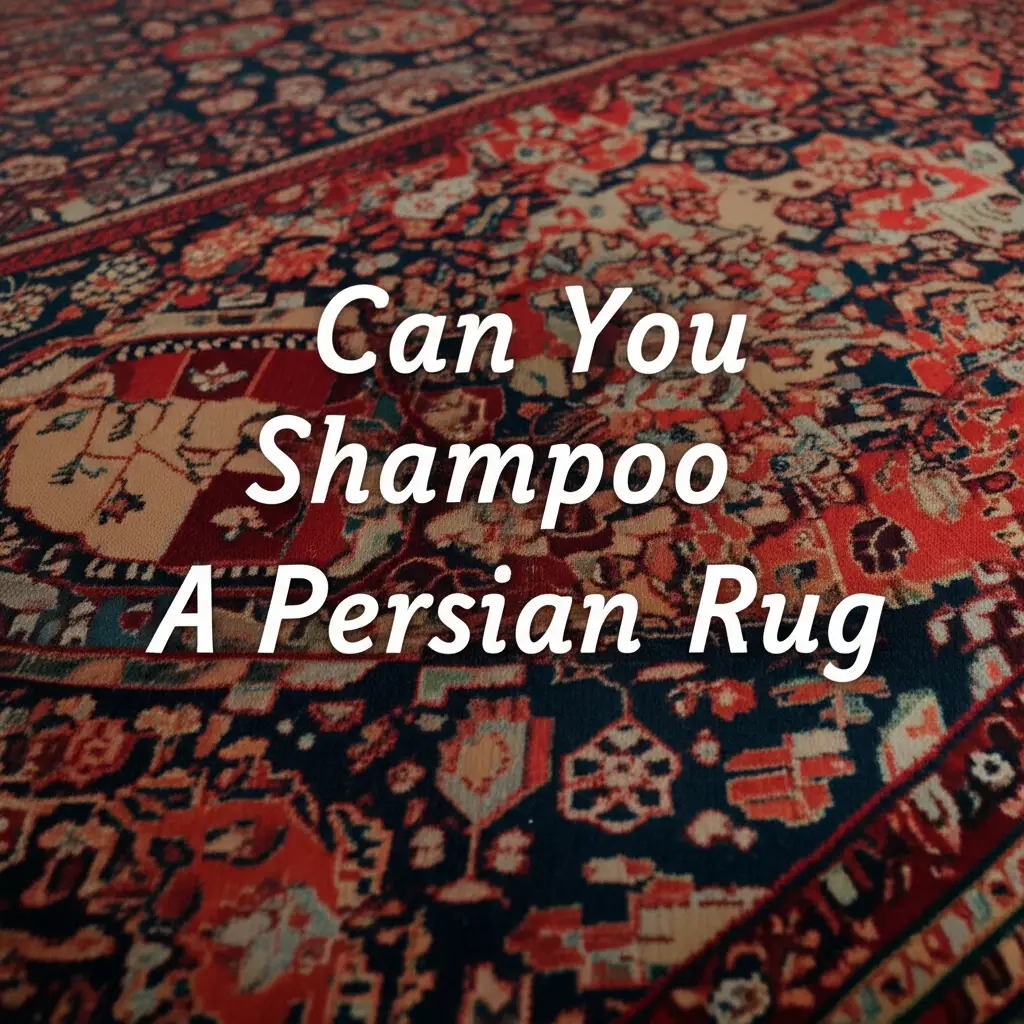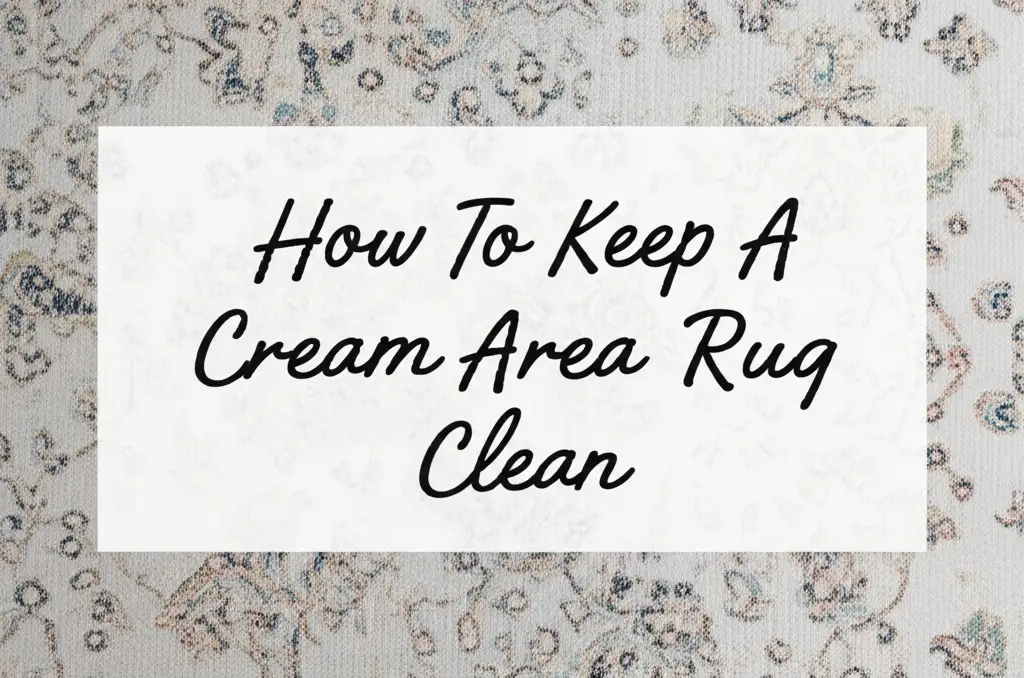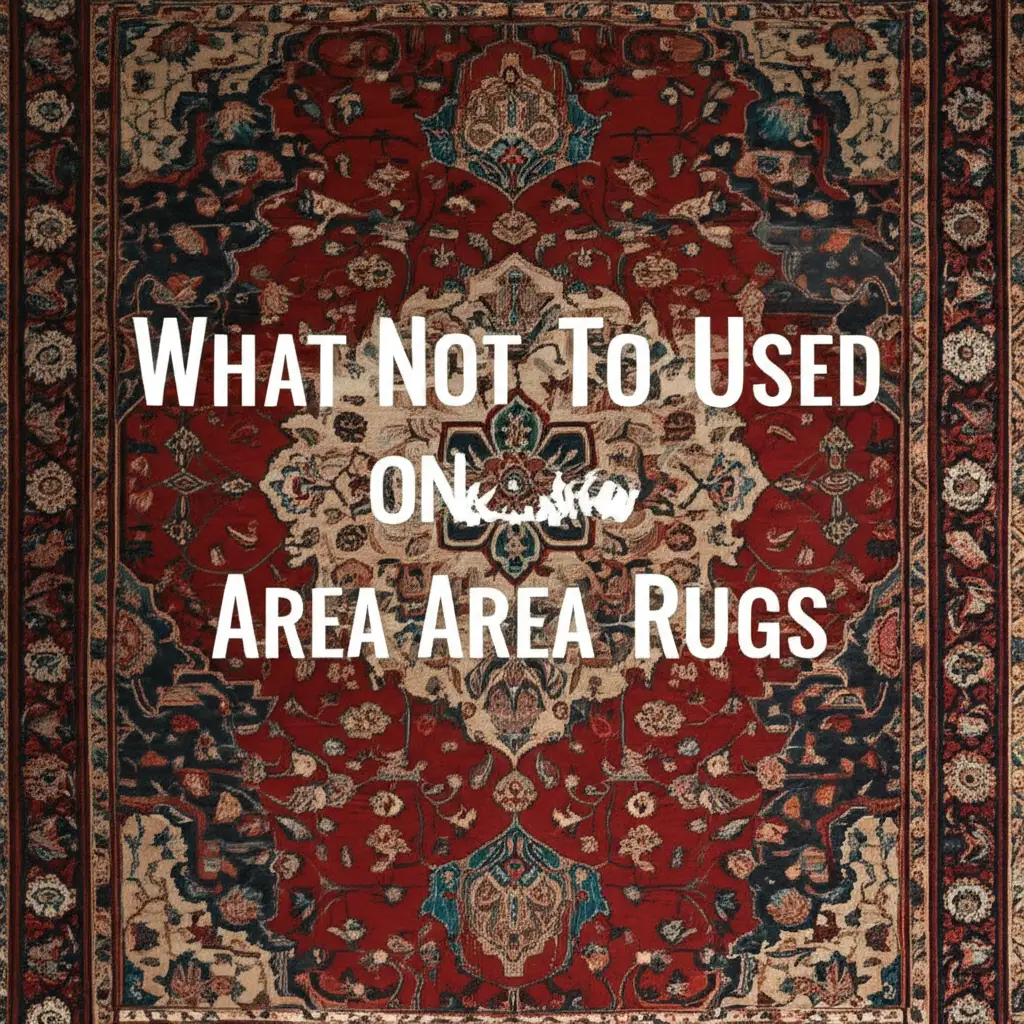· Elira Thomsen · Rug Care · 15 min read
How To Get Urine Stains Out Of A Wool Rug

Restore Your Wool Rug: How to Get Urine Stains Out
A beautiful wool rug adds warmth and style to any room. Its natural fibers feel soft underfoot and offer lasting beauty. However, accidents happen, and a fresh urine stain can be distressing for any rug owner. Urine not only creates an unsightly spot but also leaves behind a strong, unpleasant odor. Getting urine stains out of a wool rug requires specific methods. Ignoring these stains can lead to permanent damage and lingering smells.
I understand how frustrating it feels to find a new stain on your favorite rug. This guide helps you tackle urine spots effectively. We will cover immediate actions for fresh stains and solutions for dried marks. You will learn about safe cleaning agents and proper techniques. This article also gives tips for odor removal and prevention. Let us keep your wool rug looking its best and smelling fresh.
Takeaway
- Act quickly to blot fresh urine stains. Immediate action prevents deep penetration and odor setting.
- Use gentle, wool-safe cleaning solutions. Harsh chemicals can damage natural wool fibers.
- Focus on odor elimination with enzyme cleaners. These break down urine compounds causing bad smells.
- Consider professional cleaning for old or large stains. Experts have tools and products for difficult problems.
Urine stains on a wool rug require prompt action and specific cleaning steps. First, blot the area to remove excess liquid. Then, apply a mixture of white vinegar and water, or a specialized enzyme cleaner. These products help break down the urine compounds, removing the stain and the associated odor. Always test any solution in a hidden spot first.
Understanding Wool Rugs and Urine Stains
Wool rugs are luxurious additions to any home. They are durable, soft, and naturally resistant to dirt. Wool fibers have a protective outer layer that repels water and spills initially. This makes them easy to clean if you act fast. However, urine is different from many other spills. It is acidic at first, then becomes alkaline as it dries. This chemical change can cause significant problems for wool.
Urine contains urea, uric acid, and ammonia. These components can react badly with wool fibers. Over time, they can cause color changes, permanent staining, and fiber damage. The most challenging aspect of urine stains is the odor. As urine dries, bacteria multiply and release strong, unpleasant ammonia gases. These odors can soak deep into the rug’s backing and even the floor beneath it. This makes complete odor removal vital.
Different types of wool rugs may react differently. A dense, hand-knotted wool rug might trap urine more deeply than a flat-weave. How do you clean an area wool rug details general care tips. Fine wools, like those found in some oriental rugs, are particularly sensitive. It is important to treat all wool with care. Knowing the nature of urine and wool helps you choose the right cleaning method.
The key to success lies in understanding wool’s delicate nature. Wool can shrink or bleed colors if exposed to too much moisture or harsh chemicals. It also retains odors more readily than synthetic fibers. This is why a targeted approach is necessary. We need solutions that neutralize urine without harming the rug itself. Understanding these characteristics prepares you for effective stain removal.
Act Fast: Immediate Steps for Fresh Urine Stains
A fresh urine stain is much easier to clean than a dried one. Speed is your best friend when an accident occurs. The less time urine sits on your wool rug, the less it can penetrate the fibers and backing. This also limits the chance for odor-causing bacteria to grow. Immediate action greatly improves your chances of complete removal.
First, grab plenty of clean white cloths or paper towels. Avoid colored cloths, as their dyes might transfer to your rug. Gently blot the wet area. Do not rub the stain. Rubbing pushes the urine deeper into the fibers and spreads it. Instead, press down firmly on the stain with a clean cloth. Allow the cloth to absorb the liquid. Repeat this blotting process with fresh cloths until no more moisture transfers. You want to absorb as much urine as possible.
Next, stand on the clean cloths to apply more pressure. This helps wick up urine from deeper within the rug pile. You can place a heavy book or object on top of the cloths for added weight. Leave it there for a few minutes. Check the cloths frequently and replace them as they become saturated. Your goal is to remove all visible wetness.
After blotting, you can rinse the area with a small amount of clean, cool water. Only use a little water to avoid oversaturating the rug. Blot again immediately after adding water. Continue blotting until the area feels almost dry to the touch. This rinsing step helps dilute any remaining urine in the fibers. It prepares the area for actual cleaning solutions.
DIY Solutions for Fresh Urine Stains on Wool
After blotting, you are ready to apply a cleaning solution. Several DIY options can effectively remove fresh urine stains from wool rugs. These methods use common household items. They are generally safe for wool when used correctly. Always test any solution in an inconspicuous area of your rug first. This ensures no color changes or damage occurs.
One highly effective solution is a vinegar and water mixture. Vinegar is acidic and helps neutralize the alkaline components of urine. Mix equal parts white vinegar and cool water in a spray bottle. Lightly mist the stained area. Do not saturate the rug. Gently blot the area with a clean cloth. Continue blotting until the stain lifts. The vinegar smell will disappear as the rug dries. This method is often recommended, and you can learn more about how will vinegar kill human urine small in carpet.
Baking soda is another excellent tool for urine stains and odors. After blotting and light rinsing, sprinkle a generous amount of baking soda over the damp stain. Baking soda absorbs odors and helps lift moisture. You can leave the baking soda on the stain for several hours, or even overnight. Once dry, vacuum up the baking soda. This method is especially good for tackling residual smells. For more details on this, see how to clean a wool rug with baking soda.
For a stronger approach, consider using a mild dish soap solution. Mix a small amount of clear, unscented dish soap with cool water. Use only a tiny drop of soap. Apply the suds with a clean cloth to the stain. Gently blot, then follow with a clean, damp cloth to rinse the area. Blot dry thoroughly. Avoid using too much soap, as it can leave a residue. These DIY solutions are a good first line of defense against fresh urine stains.
Tackling Dried or Old Urine Stains on Wool Rugs
Dried or old urine stains present a greater challenge than fresh ones. The urine has had time to bond with the wool fibers. Odor-causing bacteria have also multiplied. These stains often appear darker and have a stronger, more persistent smell. However, do not despair. You can still make significant progress with the right approach. Patience and repeated efforts are key here.
First, you need to rehydrate the dried stain. Mix a solution of one part white vinegar to two parts cool water. Lightly mist the dried stain with this solution. Allow it to sit for a few minutes. This helps loosen the dried urine crystals. Then, blot the area thoroughly with clean cloths. This rehydration and blotting step is crucial for breaking down the old stain. You are essentially bringing the stain back to a “fresh” state for easier removal. Find additional tips for stubborn marks in our article on how to get older stains out of carpet.
Once rehydrated, an enzyme-based cleaner is your best option. These cleaners contain special enzymes that break down urine’s organic compounds. They target both the stain and the odor source. Follow the product instructions carefully. Most require you to spray the area and let it sit for a specific time. Then, you blot the area dry. Repeat this process if the stain or odor persists. Enzyme cleaners are designed for pet stains and are generally safe for wool.
For stubborn, dried-in odors, you may need a more intensive treatment. After cleaning with an enzyme cleaner, cover the damp area with a thick layer of baking soda. Allow it to sit for 12-24 hours. The baking soda will absorb residual moisture and odor. Vacuum thoroughly after the baking soda dries. You may need to repeat the entire process multiple times for very old or deep stains.
Eliminating Stubborn Odors from Wool Rugs
Removing the visible stain is only half the battle; the odor must go too. Urine odor can be persistent, even after the stain seems gone. This is because microscopic urine crystals remain deep within the fibers. These crystals absorb moisture from the air, reactivating the smell. Effectively eliminating these odors requires targeting these hidden sources.
Enzyme cleaners are the gold standard for odor removal. These products contain living enzymes that digest organic matter like urine proteins and uric acid crystals. They do not just mask odors; they break them down completely. Look for cleaners specifically formulated for pet urine and safe for wool. Apply the enzyme cleaner liberally to the affected area, ensuring it reaches the rug’s backing. Let it sit according to the product’s instructions, often several hours or overnight. Then blot dry. Repeat this application if the odor returns. This is also key for how to clean carpet stains pets.
Another effective method involves activated charcoal or baking soda. After cleaning, sprinkle a generous amount of baking soda over the dried area. Baking soda is a natural deodorizer that absorbs odors. For a more intense treatment, you can also use activated charcoal powder. Leave the baking soda or charcoal on the rug for 24-48 hours. Then, vacuum it up thoroughly. This helps draw out and absorb lingering smells.
Proper ventilation is also critical. Open windows and use fans to circulate air in the room. This helps dry the rug and dissipate odors. If possible, take the rug outside to air it out on a sunny, dry day. Sunlight can also help sanitize and deodorize. For significant pet urine issues, especially from cats, read our guide on how to clean an oriental rug cat urine, which shares additional odor strategies. Combining these steps ensures thorough odor elimination, leaving your wool rug fresh.
Professional Cleaning vs. DIY for Wool Rug Urine Stains
Deciding between DIY and professional cleaning for urine stains depends on several factors. Consider the size of the stain, its age, and the value of your wool rug. While DIY methods are effective for fresh, small stains, some situations call for expert help. Professional cleaners have specialized equipment and knowledge that can save your rug. They can also offer specific advice for different rug types, such as how to clean a handwoven wool rug.
DIY cleaning is a great first step for immediate action. For small, recent accidents, home remedies like vinegar and baking soda often suffice. These methods are cost-effective and allow for quick response. They give you control over the process. However, DIY solutions may not penetrate deep enough to remove all urine from the rug’s backing. They might also struggle with pervasive odors. If you are unsure about using DIY methods, always test them in an inconspicuous area first.
Professional cleaners offer a deep, thorough cleaning process. They use powerful extraction equipment to remove urine from deep within the rug fibers and backing. Professionals also have access to industrial-strength enzyme treatments. These treatments are often more concentrated than retail products. They can effectively neutralize severe odors. A professional cleaner can also assess the rug’s fiber type and construction. This ensures the safest and most effective cleaning method. They know the limits of cleaning processes; for example, they can advise on whether will the Rug Doctor work on wool carpets for your specific rug.
You should consider professional cleaning if:
- The urine stain is large or covers a significant area.
- The stain is old or has dried deeply into the rug.
- A strong, persistent odor remains after multiple DIY attempts.
- You own a valuable or antique wool rug.
- You are unsure about the safety of DIY methods for your specific rug.
Investing in professional cleaning can extend the life of your wool rug. It ensures the stain and odor are truly gone. This helps maintain your rug’s beauty and value.
Prevention and Maintenance for Your Wool Rugs
Preventing urine stains is always better than cleaning them. Proactive measures help keep your wool rug pristine. Good habits reduce the likelihood of accidents. This saves you time and effort in the long run. A clean rug stays beautiful for longer.
Pet training is the most effective prevention method for pet owners. Ensure your pets are fully house-trained. Provide ample opportunities for outdoor potty breaks. If you have a new pet or a puppy, consider restricting their access to areas with valuable wool rugs. Crate training can also help prevent accidents indoors. Consistency in training is vital for success.
Use protective measures for your rug. Apply a wool-safe stain repellent to your rug. These treatments create a barrier on the fibers. This barrier makes spills less likely to penetrate immediately. It gives you more time to clean up accidents. Reapply stain protectors periodically according to the product’s instructions. Placing washable mats or runners in high-traffic areas or under pet feeding stations can also offer an extra layer of protection.
Regular cleaning is also crucial for overall rug health. Vacuum your wool rug regularly to remove dirt and debris. This prevents particles from grinding into the fibers, which can cause damage. Spot clean spills immediately, even if they are not urine. Prompt action prevents stains from setting. For general maintenance, a professional cleaning every 12-18 months is recommended. This helps remove embedded dirt and revitalizes the fibers.
Consider using pet-specific deterrents if a particular spot on the rug attracts your pet. Some sprays contain scents that pets dislike. They are harmless to pets and rugs. Always choose products designed for use on carpets and wool. By combining training, protection, and routine maintenance, you can significantly reduce the risk of urine stains on your beautiful wool rug.
Frequently Asked Questions
Q: Can I use a steam cleaner on a wool rug with urine stains? A: Steam cleaning wool rugs is generally not recommended. Wool is sensitive to high heat and excessive moisture. Steam can cause wool fibers to shrink, distort, or even bleed colors. It can also set protein stains like urine, making them harder to remove. Stick to blotting and cold water cleaning methods for urine stains.
Q: What if the urine stain smells even after cleaning? A: If the odor persists, it means urine crystals remain deep in the rug. You need a strong enzyme cleaner. Apply it liberally, ensuring it soaks into the rug’s backing. Allow it to sit for the maximum recommended time, often 8-24 hours, to allow enzymes to break down all urine compounds. Follow with a thorough blotting and air drying.
Q: How often should I professionally clean my wool rug? A: For general maintenance, aim for professional cleaning every 12 to 18 months. If your rug experiences frequent pet accidents or heavy traffic, you might need professional cleaning more often, perhaps every 6-12 months. Regular professional care helps maintain the rug’s integrity and prevents buildup of dirt and allergens.
Q: Are all enzyme cleaners safe for wool? A: Most enzyme cleaners formulated for pet stains are safe for wool. However, always read the label carefully to confirm. Look for products specifically stating they are safe for natural fibers or wool. Always perform a patch test on a hidden area of your rug first. This ensures no adverse reactions occur before treating the visible stain.
Q: Can urine permanently damage a wool rug? A: Yes, if left untreated, urine can cause permanent damage to a wool rug. The acidic and then alkaline nature of urine can lead to color fading, fiber deterioration, and a persistent, deeply set odor. Old urine stains are much harder to remove completely and can even cause dry rot in the rug’s backing. Prompt action is crucial to prevent lasting harm.
Conclusion
Getting urine stains out of a wool rug might seem like a daunting task. Yet, with the right steps and products, you can restore your cherished rug’s beauty and freshness. Remember, speed is your greatest ally when dealing with fresh accidents. Blotting immediately prevents deeper penetration and odor setting. For both fresh and old stains, gentle, wool-safe solutions are vital.
Utilize effective DIY methods like vinegar and baking soda for initial treatments. For stubborn odors or older stains, enzyme-based cleaners are your best friend. They break down the complex compounds that cause those unpleasant smells. Do not forget the importance of proper drying and ventilation to ensure complete odor elimination. If the stain is large, old, or you have a valuable rug, do not hesitate to seek professional help. Experts have the tools and experience to tackle challenging problems.
By following these guidelines, you can protect your investment and keep your wool rug looking its best. Consistent cleaning habits and preventative measures will ensure your wool rug remains a beautiful, fresh-smelling centerpiece in your home for years to come. Take action now to preserve your rug’s warmth and charm.





